by Steve Selden | Feb 27, 2017 | Conservation
In celebration of International Polar Bear Day, Natural Habitat Adventures and Lindblad Expeditions have come up with this fun polar bear quiz for you to test your knowledge of the King of the Arctic, the magnificent polar bear.
Click this link to take the quiz: https://nathab.com/features/polar-bear-trivia-quiz/
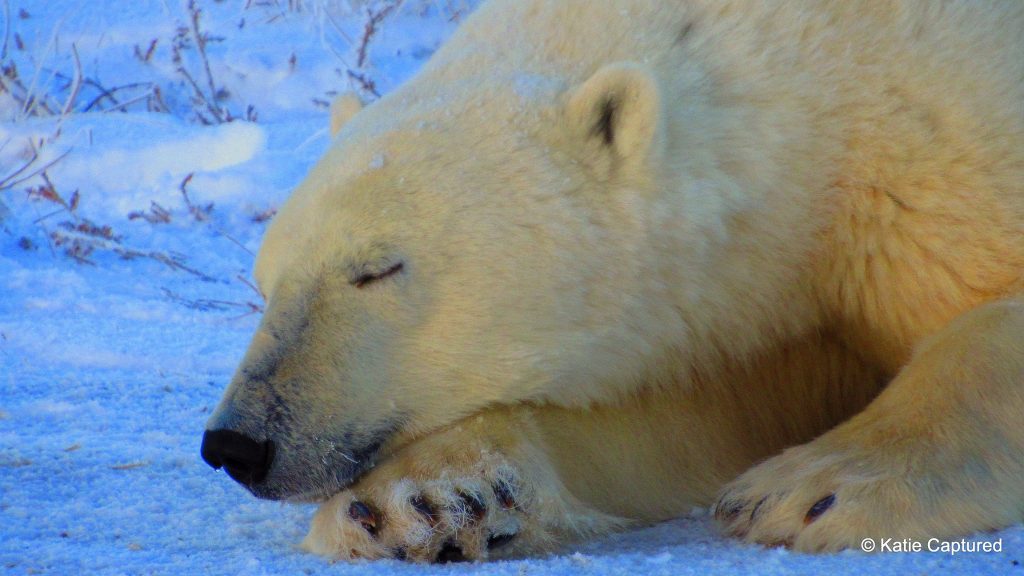
Resting polar bear waiting for the ice to return on the Hudson Bay., Katie de Meulles photo.
International Polar Bear Day directs our focus to the magnificent polar bear and the pristine Arctic. The urgency to raise global awareness of the threats facing the region and polar bears as well as the other wildlife of the north is upon us. If we all band together and stay strong we can protect the wild land and creatures that make the Arctic the last frontier of nature.
Take the quiz below to find out how much you know about polar bears, then share your results with your friends and family on social media!
by Steve Selden | Feb 24, 2017 | Conservation
The “Arctic Doomsday” seed vault just took in a hefty deposit of some of the world’s most varied and treasured plant seeds to store in case of a world catastrophe.

Arctic “doomsday” seed vault in Svalbard. @christophorus photo
The recent deposit to the Global Seed Vault consisted of 50,000 seeds from several countries around the world including the US, Britain, and Pakistan.15,000 of those seeds derived from the International Center for Agricultural Research (ICARDA), restoring some of the seeds they borrowed three years ago. The vault has been the go – to storage facility as ICARDA’s other facility is inaccessible in Aleppo, Syria due to sustained conflict. The organization, which strives to improve agricultural production in dry zones such as the Middle East and Africa, borrowed potato, rice, barley, lentil, wheat and sorghum seeds previously and has since relocated its operations to Morocco and Lebanon.
“Together, the nations that have deposited their seed collections account for over a quarter of the world’s population,” Marie Haga, Executive Director of Crop Trust, the organization behind the vault, said in a statement.
The vault, located on the remote Arctic isle of Spitsbergen is buried 425 feet inside a mountain and covered with snow. The consistent cool temperatures from permafrost levels and low seismic activity are crucial factors in its location and ability to sustain seeds for hundreds of years.

Schematic of the Doomsday Vault in Spitsbergen.
The Svalbard Global Seed Vault currently hold just under a million seeds and has a full capacity of 4.5 million. The Seeds would be a backup for key agricultural staples in the case of a global catastrophic incident.
by Steve Selden | Feb 21, 2017 | Conservation

Polarsteam during a research expedition in 2015. Mario Hoppmann photo.
Sir John Franklin and a few other early Arctic explorers would have been shocked at this announcement. Scientists are organizing one of the biggest research expeditions ever planned and the challenge is somewhat unconventional. Tentatively scheduled to sail in the summer of 2019, the 120 meter research vessel Polarsteam will spend a year drifting across the North Pole locked in sea ice. During the drift the crew of researchers from 50 institutions and 14 countries will try and discover trends leading to the dramatic climate changes we have been experiencing recently.
Camps will be set up on the ice surface and measurements and analysis data from expeditions will be taken in places not previously possible.
“The decline of Arctic sea ice is much faster than the climate models can reproduce and we need better climate models to make better predictions for the future,” said MOSAiC expedition co-leader Professor Markus Rex, at a recent American Association for the Advancement of Sciences (AAAS) meeting. “There is a potential that in a few decades the Arctic will be ice-free in summer. That would be a different world and we need to know about that in advance; we need to know is that going to happen or will that not happen?”

Arctic research sailing ship Fram in 1894.
There was one 19th century expedition that attempted this same lofty goal of drifting across the north Pole. In 1893, the Fram, lead by Norwegian explorer Fridtjo Nansen, attempted to “naturally” drift across the pole while locked in sea ice. Nansen armed with a generous budget raised by the Christiana Geographical Society as well as a personal contribution from King Oscar of Norway commissioned construction of a stout ship designed with a rounded hull to resist the crushing affects of the ice pack. Nansen left the ship after nearly a year and attempted to reach the North Pole on foot with another crew member. The story ends well and will,be covered in a subsequent post.
The Polarsteam will have no risk being trapped in ice as the technology of the day allows fro a sturdy hull unable to be crushed by the pressure of the Arctic ice. Polar bears will be the only danger for researchers on the ice and armed alert guards will be stationed at each camp along the journey.
The total cost of the German expedition is expected to cost $67 million to form a full view of the polar ice cap through the utilization of the most modern technology. Partner institutions from China, UK, Russia and the United States,will all take part in the endeavor.
by Steve Selden | Feb 17, 2017 | Conservation
A 2016 Scientific Working Group report on two Arctic sub – populations was released last week and appeared to confirm what local Inuit have been seeing over many years. Polar bear populations in Baffin Bay and Kane Basin are considered stable and not declining as Polar Bear Specialist Group scientists previously claimed.
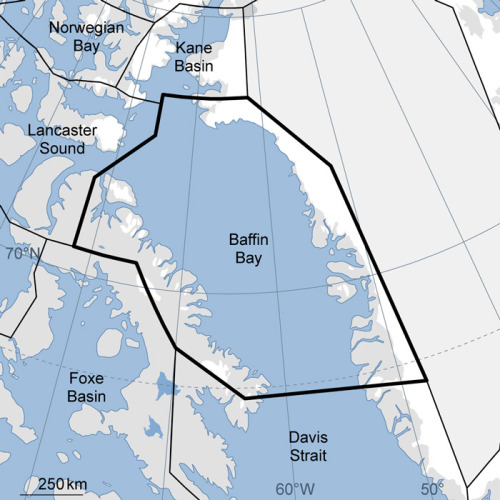
The IUCN Polar Bear Specialist Group had previously designated the two sub – populations to be in decline mostly as a result of over – hunting. The same regions were assessed by Environment Canada in 2014 and termed ‘data deficient” for Kane Basin and ‘likely declining’ for Baffin Bay.

The new report suggests the global population estimate should be adjusted to the plus side and the 2015 IUCN Red List also be revised. Currently the only sub – population to hold the ‘likely declining’ label is the Southern Beaufort region. With the new data at hand the global population size should rise from 22,000-31,000 (as designated by 2015 IUCN Red List) to 22,633-32,257 polar bears worldwide. This estimate is not including the surprising 42% increase in the Svalbard area of the Barents Sea sub – population. In 2015 975 polar bears were counted in that region nearly 300 more than the 685 counted in 2004.
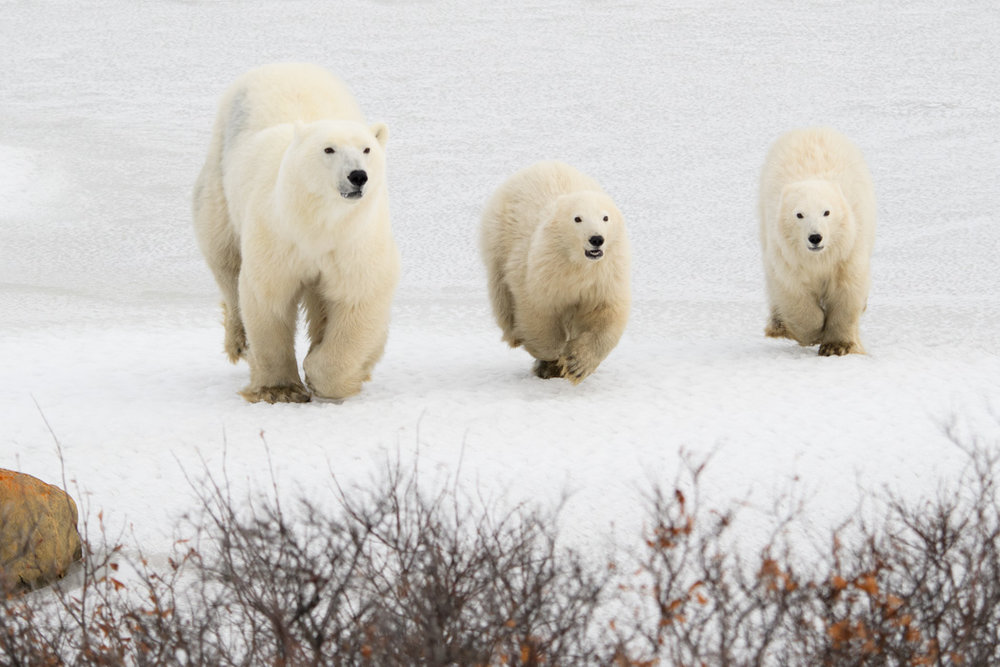
Polar bears on the run to safety. Jeff Klofft photo
In the wake of continuous dark news regarding Arctic ice decline, this news, at very least, is encouraging from a species perspective. With action and continued conservation efforts from groups such as World Wildlife Fund, polar bears and the Arctic can be protected well into the future.
by Steve Selden | Jun 6, 2016 | Conservation

The Northwest Passage is becoming newsworthy as a possible Arctic trade route. Fednav photo.
In April China encouraged shippers in country to use the Northwest Passage for trade routes around the world. The problem is there is dispute over the newly, somewhat accessible, Arctic route as to whether it’s an international waterway or under Canadian jurisdiction.
The Northwest Passage is roughly 40 percent shorter than the Panama Canal route, and even though there will be adverse affects on environment and wildlife species, the shorter passage will reduce greenhouse gas emissions by more than 1,300 tons. Russia’s Northern Sea Route has actually drawn more attention since it is usually more navigable than the Northwest Passage, which,often is still impassable throughout the summer. In 2009, only two ships completed the Northern Sea Route voyage as opposed to nearly 500 this year!
Eventually the passage will come to a broader discussion as to who controls rights to the region. However, at this point without enough surety that ships are able to pass with consistency, the issue is at a “simmer” level.
Traditionally, Ottawa and Washington have carried out talks trying to settle the jurisdiction dispute with Canada claiming all rights to the waterways that combine to form the Northwest Passage. Shippers, by this edict, need to comply with Canadian regulations when traversing the passage. The United States disagrees with their proposals but will comply in the meantime and notify Ottawa anytime a US firm plans to sail the waterway. Now with China entering the mix the scales could tip and a cause a flare – up in political negotiations.

The Northwest Passage in the Arctic will be used for future shipping to China. Canadian Geographic image.
China has vaguely outlined its’ own guidelines to sailing the Northwest Passage and announce that it wants more ships utilizing the trade route. In not so many words the country is asserting its position on Canada’s claim.
However, China may just be putting the cart in front of the horse by asserting the trade route preference for the firms that might use the route. COSCO, a prodigious shipper has deemed the northern route too dangerous to attempt on a regular basis.
For now the Panama and Suez Canals still remains the choice for most shipping companies. Posturing is in place by these interested countries for the future and at some point the route will become viable. While weather, year – round ice and challenging navigation conditions are aspects that Ottawa cannot alter, infrastructure and updated mapping can be improved. It seems that regardless of current day usability, the groundwork is being laid for future passage of the mythical region.
by Steve Selden | May 24, 2016 | Conservation
Barrow Observatory, an Arctic Circle research station run by The National Oceanic and Atmospheric Administration, is normally a very cold place with snow lasting well into the summer months. This year is different according to researchers as snow has begun to melt a good month prior to the normal thaw time. It appears the dynamic Arctic summer is starting earlier in the far north.
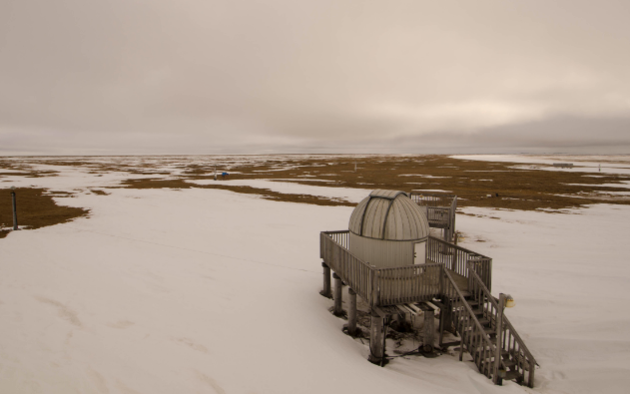
Barrow Observatory run by NOAA in the Arctic Circle. NOAA photo.
The observatory, 320 miles north of the Arctic Circle, is seeing the earliest snow melt in nearly 80 years. David Douglas, a U. S. Geological Survey research biologist stated the area looks like “June or early July right now.” May 13 marked the beginning of the snow melting this year.
The snow melt at Barrow Observatory follows one of the warmest Alaska winters on record. Temperatures were over 11 degrees above average according to NOAA. Douglas emphasizes the melting shows how the Arctic’s ice coverage has become quite fragile and forecasts record low sea ice for in the Arctic for 2016.
“Polar bears are having to make their decisions about how to move and where to go on thinner ice pack that’s mostly first-year ice,” Douglas said.
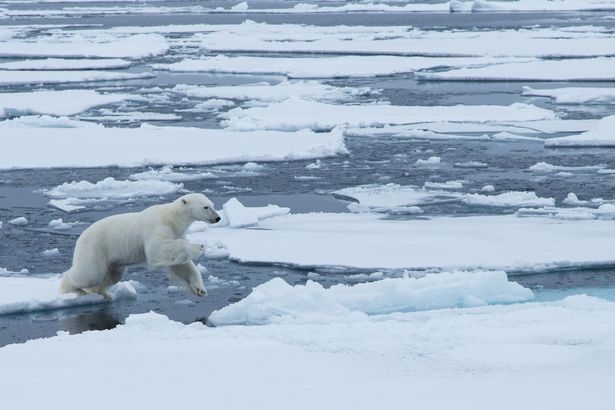
A polar bear searching for sufficient seal – hunting ice in the Arctic. Kyriaksos Kaziras photo.
These ominous forecasts have been surfacing for years and now we are seeing harbingers of these prophesies in physical evidence all over the world and especially in the high Arctic.













